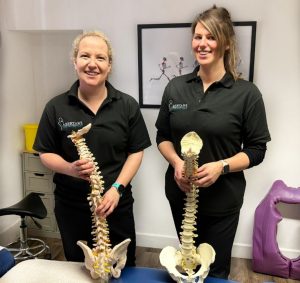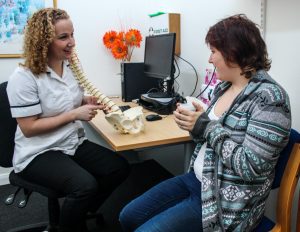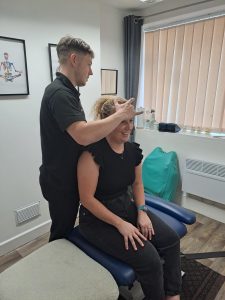by Sarah Williams
I am a huge believer that we all need to reset, recharge and recalibrate, and sometimes a holiday is the best way to enforce this. Anyone coming in before a holiday knows I love a treatment MOT to help get into holiday mode.
However, for every pro there is a con, and I want to go through ways to avoid some common travel injuries I see in the clinic. My goal is that by reading this blog, you can prevent body aches and pains while away.
Dreaded beds
If you struggle with adapting to new beds, my best advice is to pack your own pillow. It’s not the same as sleeping in your own bed, but it certainly helps the transition of sleeping in a different bed. Let’s face it, we do not wear half the clothes we pack, and it is unlikely we need 22 t-shirts for a 7-day holiday. There is far less at stake in buying travel wash and taking less than in jeopardising your holiday with a sore neck. Or, at many hotels, you can request extra pillows and/or firm pillows.
Neck pillow
I know what you’re thinking… there’s a theme. No support + movement from transport = potential problems. For any form of transportation where you’re a passenger, a neck pillow is a worthwhile investment. Ideally, a supportive one is best, but to resolve our first dilemma, you can now buy “empty” neck pillows that you can pack extra clothes in.
Embarking on your journey
The bend and twist with a weight = the ultimate spine crime. TAKE YOUR TIME. Ask for help; most trains and airports offer assistance.
Bend from your knees and be square on to your luggage to avoid twisting. Be mindful of the following-
- Travelling by train – be careful stepping on and off the train and using the luggage racks. When travelling by train, I always recommend getting out of your seat earlier than you need to, so you can take your time (unless you are the last stop on the train journey). Stress naturally contracts our muscles. In my opinion, you’re increasing your chances of injury by rushing.
- Travelling by plane – take your time putting your luggage on the scales, placing hand luggage overhead, and collecting luggage from the carousels. Luggage carousels are my number one caution for avoiding holiday injury.
- Travelling by car – take time loading and unloading the vehicle. Be careful stretching for barrier tickets in carparks.
Seat and feet
Often, our foot placement is out of sight and therefore out of mind. Be mindful, is your seat position good for you? What are your feet doing? Are you crossing your legs? Ideally, you want your feet flat on the floor and knees at a 90-degree bend.
These boots were made for walking
Regardless of how you plan to travel to your destination, try to move as much as possible. If you’re travelling by car, have you scheduled a service stop? If you are travelling by train, have you walked up the carriage? If you are travelling by plane, have you walked before or during your flight?
Muscle creep can occur as quickly as 20 minutes, when your body adapts to the position you are in. Sitting generally brings out the worst in our posture, as it increases the load on our lower back and pelvis.
If you are stuck in your seat, try seated stretches like neck stretches, chin tucks, heel raises and marching knees. These will help combat muscle creep and will help ensure the best posture while travelling.
Passion for fashion
Comfort is key. There are lots of fashion trends that do our bodies no favours. The main things to consider when travelling:-
- Tight clothes,
- Ill-fitting shoes,
- Not enough layers
All of the above have potential pitfalls. A long journey in ill-fitting shoes may alter your gait due to pain avoidance caused by the shoes rubbing against your feet. With a lot of public transport, it is hard to gauge the temperature until you are onboard. Too cold, our muscles contract and fight to keep us warm. Overheating can be a real trigger for headache and migraine sufferers, so not being able to take layers off can be a risk. Tight waistbands on long journeys can negatively impact gut health. Research has shown a correlation between IBS and low back pain due to inflammation. One study suggested that people who have IBS are 2.6 times more likely to have back pain than those without IBS.
Hydration
This is the most straightforward hack: while travelling and keeping hydrated, the body is nourished on so many levels. From a biomechanical standpoint, it supports joint and muscle health, disc health, reduces inflammation, and reduces pain signals, while also improving joint lubrication.
I hope this helps. If you would like to know more or have any questions for our chiropractors at Abertawe Chiropractic Clinic, please don’t hesitate to contact us by message or call the clinic on 01792 277211. On social media, you will also find a compact chiropractic travel first aid kit.




